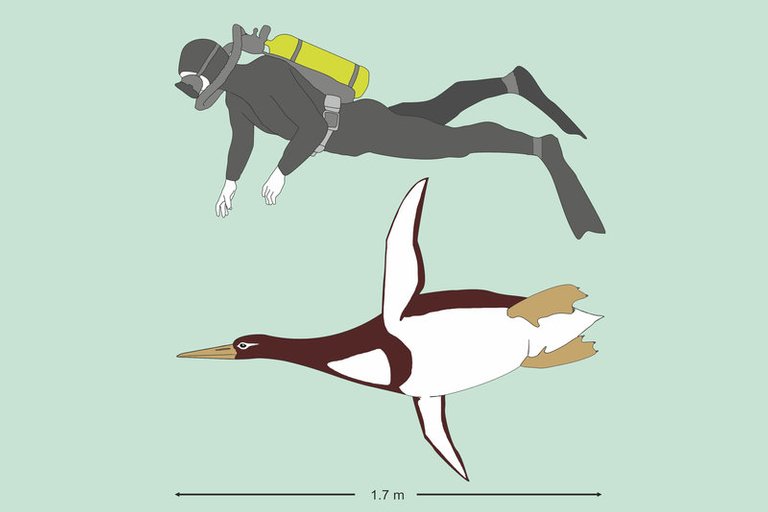
An international team of scientists have announced the discovery of a previously unknown species of prehistoric penguin.
The bird waddled around off the east coast of New Zealand between 55 and 60 million years ago. And it was a giant as far as penguins go. The researchers estimate that it probably weighed about 220 pounds and was around 5 feet 10 inches tall.
"That's about as tall as a medium-sized man," says Gerald Mayr, a paleontologist at the Senckenberg Research Institute and Natural History Museum in Franfurt, Germany, and the lead author of the new study published today in Nature Communications. "This particular specimen is one of the largest known fossil penguins."
The largest living penguin, on the other hand, the Emperor penguin, is a good bit shorter — around 4 feet.
The scientists have named the new species Kumimanu biceae, which means 'monster bird' in the Maori language. (Kumi is the name of a monster in Maori mythology and manu means bird.)
The new finding is really cool, says Julia Clarke, a paleontologist at the University of Texas, Austin, who wasn't involved in the study. "I mean, what's not cool about a human-sized penguin?" she says.
While giant penguins may seem odd to us, they were pretty common millions of years ago. "We have had evidence of giant penguins, but they've all been younger than the new discovery," says Clarke.
Take for example, Anthropornis nordenskjoeldi, which was similar in size to the newly discovered species. It lived in Antarctica between 33 to 45 million years ago. Then there was Icadyptes salasi, which was almost 5 feet tall and lived in what is now Peru about 36 million years ago.
What this new species shows is that penguins evolved to be big very early in their evolution, says Ewan Fordyce, a paleontologist at the University of Otago, New Zealand, who wasn't involved in the new study.
"It's a few million years after the extinction of the dinosaurs," says Fordyce. With the giant reptiles gone, it may have opened "new ecological opportunities" to birds like penguins, allowing them to break through "a glass ceiling of evolutionary size," he says.
The oceans may also have allowed penguins to get so big.
"Giant penguins were occupying the seas about 20 million years before whales entered the oceans," she says. No whales, no seals, no marine mammals.
And scientists think that large marine mammals — whales, walruses, seals — are why giant penguins eventually became extinct, leaving us with the smaller, cuter birds we all adore.
i had upvote ur post
plz upvote my post at
https://steemit.com/ganeshraj225